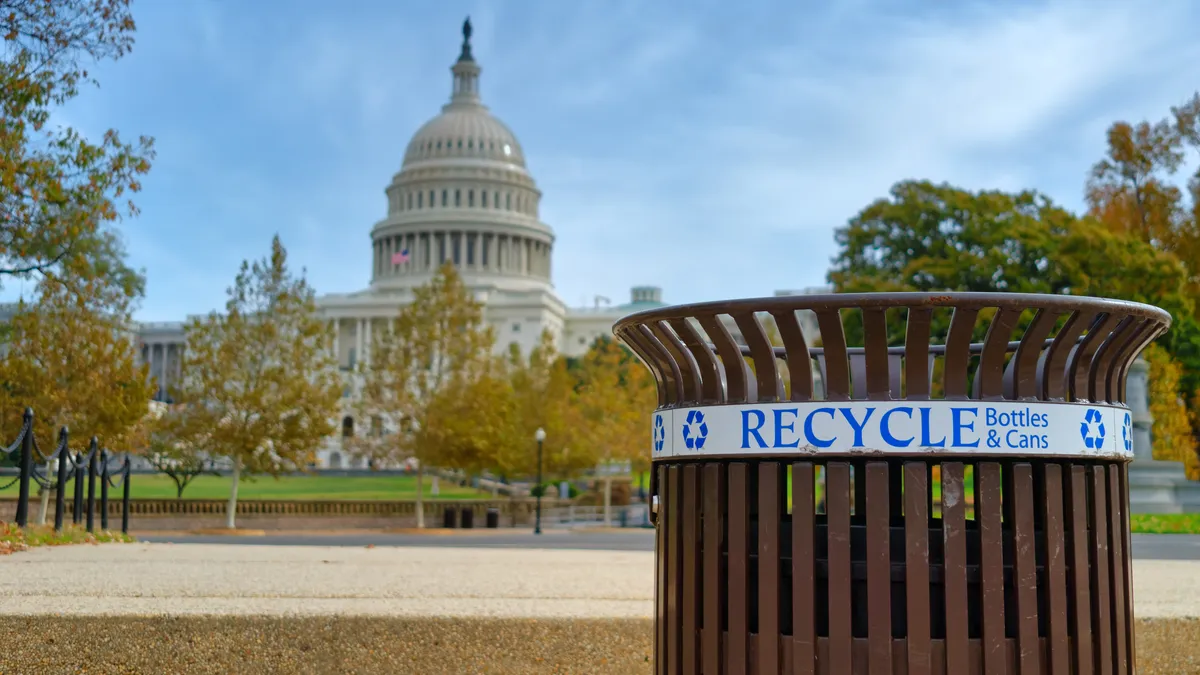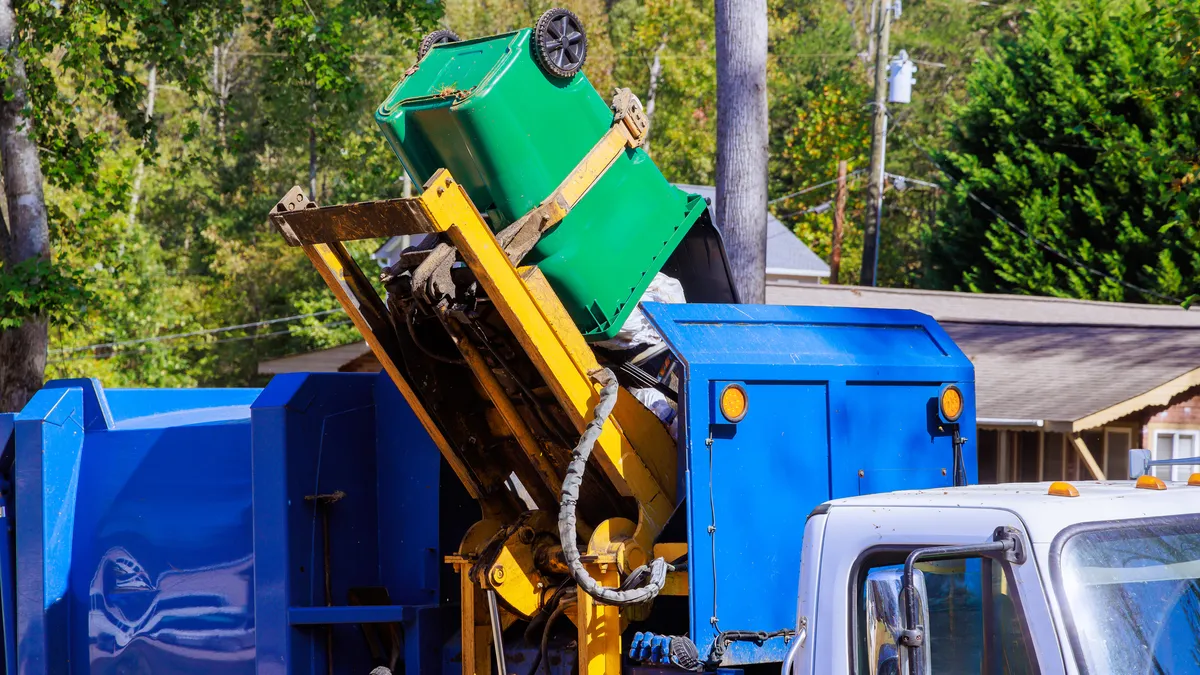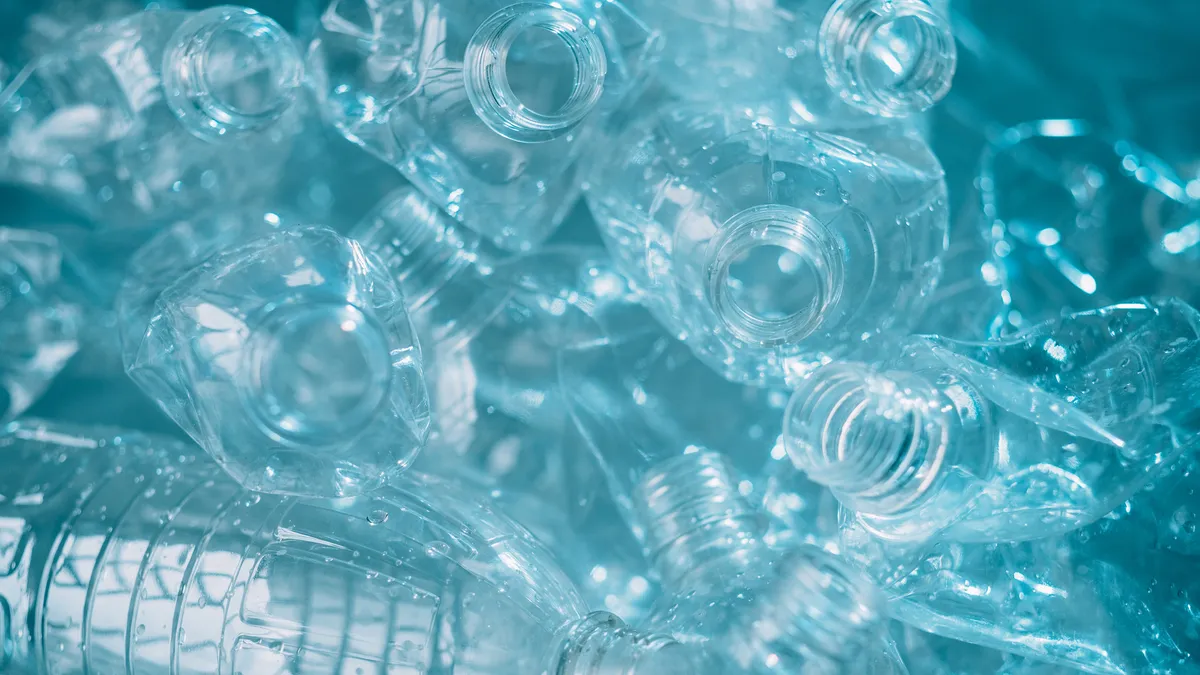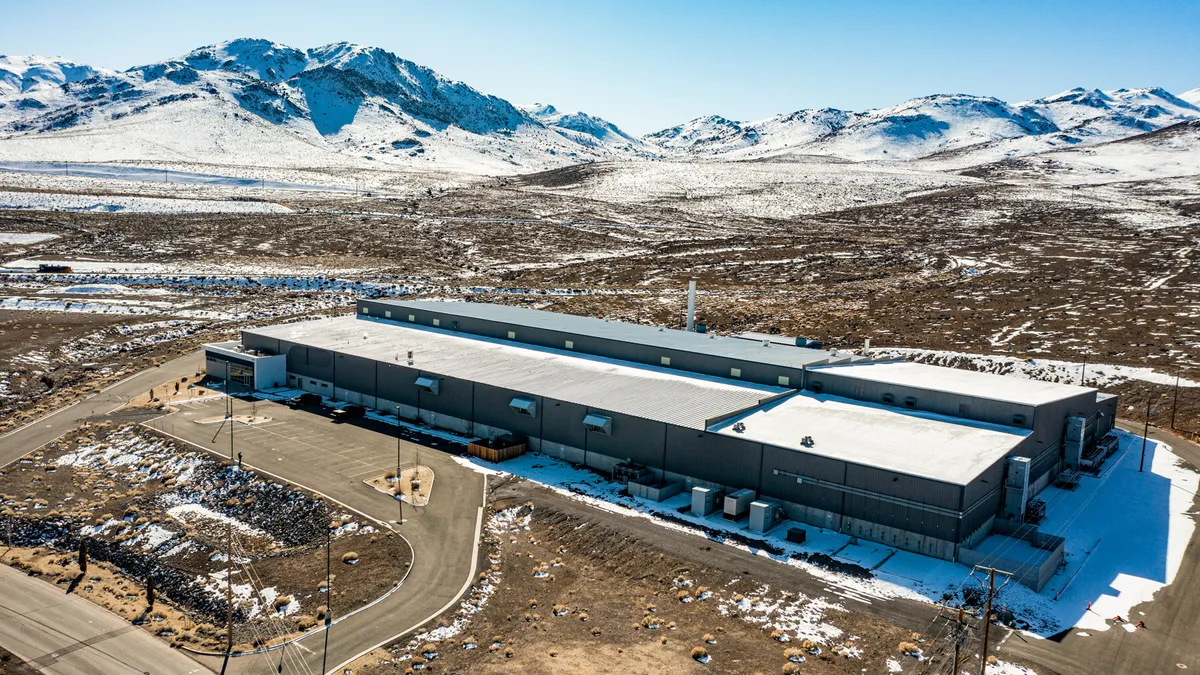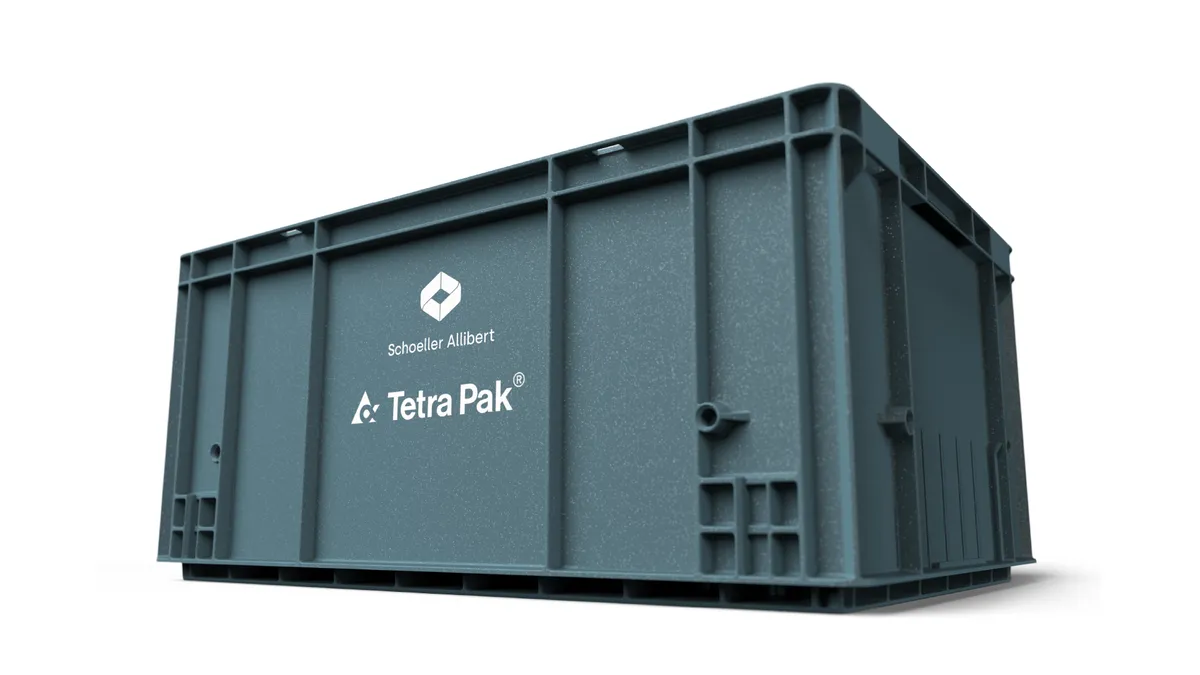This year's America Recycles Day comes at a time of heightened national interest in the topic, but also one of unprecedented challenges as the pandemic lingers and local governments look for ways to maintain operations.
While local recycling programs are increasingly common they are also far from universal. Some curbside or drop-off operations have ended in recent years, amid market volatility, and many existing programs still struggle in various ways. To get a better understanding of how this is playing out on the ground, Waste Dive recently caught up with recycling professionals working on multifamily, rural and island programs for their perspectives.
We know each recycling program has its own story to tell and would be glad to hear more about successes and challenges in your area. Please feel free to get in touch any time at waste.dive.editors@industrydive.com.
Multifamily programs
NEW YORK: John Johnson, co-founder of Inner City Green Team
Program overview: The over 500,000 people living in New York City Housing Authority (NYCHA) developments historically have lacked real access to residential recycling. In 2015, following a lawsuit, there was a new push to comply with the city’s recycling law, but implementation resulted in extremely low participation and high contamination (like “glorified garbage cans,” Johnson said). This year, Inner City Green Team (ICGT) helped launch a two-year, door-to-door recycling collection pilot within East Harlem’s Wagner Houses, one of NYCHA’s largest developments; they’ve enrolled around 300 residents there over the last six months, with hopes to expand across NYCHA developments in the future.
What’s working: ICGT’s public housing recycling model is designed to employ residents. The pilot currently feeds in labor from Green City Force, an AmeriCorps program that employs 18 to 24-year-old NYCHA residents to build job training skills in the green economy.
Unlike past attempts, Johnson credits an organized education and outreach team as critical to driving engagement. The door-to-door or “white glove concierge service,” Johnson said, takes away the anonymity and reduces the likelihood of contamination when a participant is receiving personalized reminders: “This kind of follow-up really sort of propels our program.” Additionally, ICGT is working to solidify a “green points” incentives system for participants through the likes of Recyclebank or ScanScraps.
What’s challenging: There’s a lack of public housing recycling precedents to turn to in other cities, and not much communication among peers around the U.S., according to Johnson, which left nonprofit ICGT to create a novel model.
Going forward in New York, the biggest barrier to expansion may be funding, Johnson said. The program setup is labor intensive and would require large investment from the city to scale it fully. At the same time, Johnson noted the environmental justice ramifications of not carrying out such a program, and savings in export costs by diverting waste.
WASHINGTON: Socorro Medina, recycling & composting multifamily program manager, and Cassandra Smith, multifamily outreach specialist, at Seattle Public Utilities
Program overview: Seattle policies stipulate that residents in multifamily building (five or more apartment dwellings) must have access to recycle and compost collection services in their buildings, and that recyclable and compostable items are not allowed in the garbage throughout the city. Seattle has roughly 7,000 multifamily buildings with 190,000 housing units where 36% of the city’s population lives, according to Medina and Smith. In 2020, multifamily residents generated 83,701 tons of MSW, 30,675 of which were recycled or composted — a 36.6% diversion rate.
What’s working: Seattle Public Utilities uses a “data-driven approach” to determine which buildings are in greatest need of first-time or follow-up assistance; an average year includes visits and in-depth support to between 300 and 400 buildings, with resident trainings in about 70 to 100 buildings. SPU teams first work on site with property staff to better understand solid waste issues and how internal infrastructure is set up, as well as the residents’ point of view. Outreach specialists assess how accessible and convenient it is for residents to dispose of things. For instance: is a resident able to recycle items on the same floor as their unit, such that they could easily step out of their apartment to do so, even in their slippers? Or do they need to go all the way to an outdoor enclosure?
SPU teams then offer customized recommendations on how to improve the solid waste system, including potentially adding SPU-provided indoor collection containers, resident food scrap containers, and educational posters and decals. Furthermore, SPU recently moved to simplify sorting messaging around “Top Five Items Wanted” in each stream. They also work with building management to determine the best forms of education for residents, in some cases involving multilingual solid waste experts to provide on-site or door-to-door training. “We have learned that different formats of resident education work for different audiences!” Medina and Smith said in a written response.
What’s challenging: Medina and Smith cited research showing convenience meaningfully boosts recycling and composting rates in multifamily dwellings. Ultimately, “we think that the most effective improvement would be to bring ‘single-family style’ convenience to multifamily. What that would mean is having the collection of all three streams together in a location that is close and accessible to residents,” they wrote. They also reported that a small-scale study that SPU conducted suggests that using triple chutes for garbage, recycle and compost could best serve Seattle’s waste diversion and environmental goals, while also minimizing labor and maintenance costs.
Currently, staffing to reach more buildings is another constraint: “we strive to recruit and train bilingual staff who represent the diversity of the communities SPU serves to increase the cultural competency of our work.”
Other ideas for furthering waste prevention in multifamily settings include fostering food and tool sharing in apartment buildings, or furniture reuse programs.
Rural programs
OKLAHOMA: Kathleen Welch, environmental program manager for the Wyandotte Nation
Program overview: Located in rural Oklahoma, the Wyandotte Nation’s recycling program serves local tribal residents and businesses, as well as non-tribal residents from the nearby town of Wyandotte. The Lost Creek Recycling Center — a drop-off site built with the help of federal funds — is the primary destination for local residents’ recyclable. The recycling program’s main staff member, Jon Quick, also drives around to collect certain materials from a local casino, tribal businesses and area housing complexes.
Welch estimates the Wyandotte program collected more than 97,000 pounds of material from October 2020 through September 2021, with cardboard comprising the largest share. Smurfit Kappa picks up the program’s fiber products (providing a rebate check in return) and also collects Nos. 1-2 plastics for no cost. Metals are driven to a scrapyard in nearby Joplin, Missouri.
What’s working: Before recycling started, the Wyandotte Nation paid a hauler to collect waste three to four times a week. Now, they only come once a week. Welch said the program is “well-used by the tribal members and the community here,” with especially strong participation from seniors and good attention to sorting requirements.
“People are just so happy to have this service that they are willing to do that to be able to keep the service,” said Welch. Additionally, local high school students manage a recycling drop-off container as part of their science class. The program has also seen success with tire recycling, as well as paper shredding services for local businesses.
What’s challenging: While commodity revenues cover some costs, such as baler wire and equipment repairs, and grant money helps cover some staffing costs, Welch said more funding is “always a good thing.” Ideally, with more resources, the program could afford to pay more than one dedicated person to work on recycling and could potentially expand the recycling center to have more storage space.
CALIFORNIA: Koiya Tuttle, pollution prevention manager for the Yurok Tribe Environmental Program
Program overview: The Yurok and Wyandotte programs serve a similar number of tribal residents, though differ in terms of their overall scope. The Yurok Reservation is a rural area, located along northern California’s Klamath River Basin, where tribal and non-tribal residents in Humboldt County utilize one transfer station to drop off their waste and recycling. In order to reach this site, or some satellite locations, they may travel by vehicle or boat many miles to do so. According to Tuttle, residents generally fill up around two 15-yard recycling containers per month — source-separated on site — that his staff will then drive to a regional Recology facility.
What’s working: Tuttle said “people want to recycle, they like it” and elders are especially engaged. Many people make a concerted effort at proper sorting and will regularly call him if bins aren’t available.
“As Yurok people we believe ourselves, and we raise our kids to believe, that we’re fix-the-earth people,” said Tuttle. “We’re here to bring balance back. That’s why we’re here, that’s our purpose; it’s not necessarily to make money, even though we need to.”
What’s challenging: Recycling is free, but residents must pay to drop off waste. Tuttle said that can be a challenge when people may be weighing the question of “are you going to buy diapers or are you going to pay to throw away your trash?” As a result, the area has seen some of the state’s largest illegal dump sites. That is beginning to improve and the number of active sites has been nearly cut in half, to 84, over the past five years.
While the Yurok’s programs have benefited from federal and state dollars over the years, including to build and maintain the transfer station, Tuttle says keeping rural recycling going is still “a hard thing to do when it’s not funded or severely underfunded.” His staff also works on a range of other environmental needs, so the estimated five-plus-hours round trip to drop off material twice a month can be a real challenge. Looking ahead, his goals are to fix a baler to make transport more efficient, buy a new scale, upgrade the overall drop-off facility and find a way to make the program self-sustaining within five years.
Island programs
WASHINGTON: Pete Moe, executive director of The Exchange/Orcas Recycling Services, Orcas Island
Program overview: Orcas Island, the largest of the San Juan Islands in the Pacific Northwest off the coast of Washington, manages its recycling through Orcas Recycling Services, a nonprofit organization with a zero-waste mission. Residents and tourists drop off their recyclables at the center, which processes between 650 and 700 tons a year of commingled recycling and 5,000 tons of MSW. The center services about 20,000 people during peak tourist season in the summer, but there are only about 6,000 permanent residents on the island. Orcas Recycling Services also includes a reuse center called The Exchange.
What’s working: Moe says the nonprofit model allows Orcas Island to truly work toward creative zero-waste strategies. ORS is constantly looking for ways to both reduce waste and minimize funds and fuel spent to remove waste and recyclables from the island. It recently purchased a glass crusher that turns bottles into sand used for construction projects. “The glass crusher is ideal for that, and we already have customers on the island for all the sand we can produce.”
The island offers some specialty recycling programs such as a battery takeback, which sends lithium ion and alkaline batteries to qualified recyclers in mainland Washington. The program isn’t lucrative, and if ORS weren’t a nonprofit, it would be tough to sustain any kind of battery takeback, he said. “When you take the profit aspect out of it, it allows you to do the right thing more often than the wrong thing.”
What's challenging: Like Oahu, Orcas Island pays major shipping costs to export recycled materials off the island, and those costs get higher when transportation issues arise. Orcas residents rely on the ferry system to haul all recyclables to cities like Seattle. When Washington state recently began mandating that state employees get vaccinated, the crew shortages and ferry delays that resulted backed up shipping. One alternative is to use high-cost barges, but Orcas Recycling Services has not yet had to resort to that shipping method. ORS is raising money to purchase its first baler, which will help cut down on fuel costs because it will enable workers to stack more material on ships, he said.
Moe hopes the island can someday add a formal food compost program, which he says will go even further to reducing waste and shipping costs on Orcas Island. “Our county is really interested in that, and the county is comprised of several islands, so we are doing a study in hopes of making that happen in the future.”
HAWAII: Henry Gabriel, recycling program branch chief for the City and County of Honolulu
Program overview: Honolulu offers curbside recycling collection for about 170,000 homes on the island of Oahu. The city collects about 24,000 tons of common recyclables each year, most of which go to RRR Recycling. Honolulu also contracts with other MRFs and recyclers to provide additional recycling services, such as drop-off sites for tires, EV batteries, electronics and household hazardous waste.
What’s working: Honolulu’s curbside recycling contamination rate is about 17%, which is “pretty good” compared to some cities of similar size, said Gabriel, “but we really want to bring it down more.” Although the island gets a significant number of tourists who aren’t familiar with what’s accepted or not in the local recycling bins (“Sometimes they ask, ‘Why can’t you take my yogurt cup? They can in my area,’” he says), the city has found eye-catching signs with pictures work better than fliers that spell out the rules.
Honolulu also promotes its recycling system as just one part of an integrated waste management system, meaning there’s an emphasis on reducing consumption and waste before even promoting recycling. The island’s incinerator “is an absolute last resort, and we want to divert as much as possible from that too,” he said. In general, he says, residents understand that they live on an island with limited space and resources. “Nowadays with climate change, people are more savvy. I want to show them that generating less waste is the real solution.”
What's challenging: Shipping recycled commodities off Oahu can be “hugely expensive,” he said. Most recycled commodities find off-island markets, either on the mainland or internationally. Other materials like tires and electric vehicle batteries cannot be recycled on Oahu. It already costs about $1,200 to ship a single EV battery to the continental U.S. for proper disposal or recycling, “and with the growth of EVs, we will see more EV batteries that need to be recycled or reused, or they will be illegally dumped.” Gabriel would like to see an EPR program for EVs and other hard-to-recycle items, like solar panels.
Correction: An earlier version of this story incorrectly identified the method used to ship recyclables off Orcas Island.


